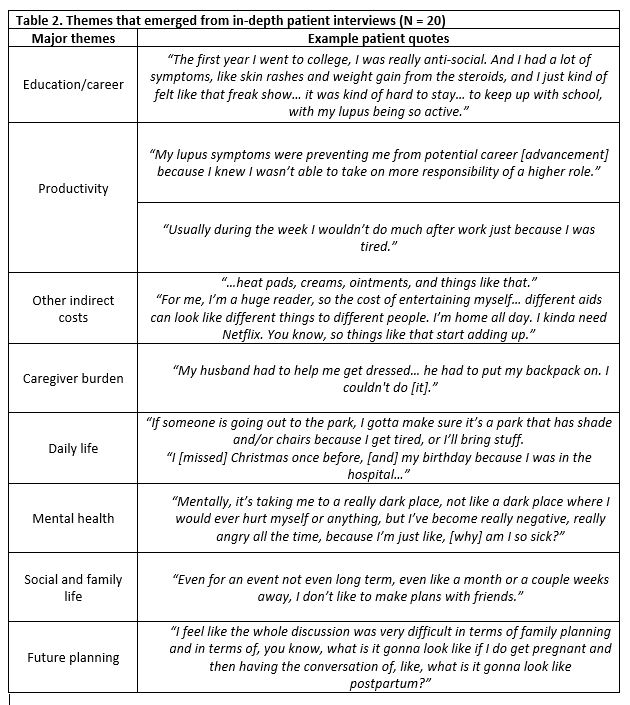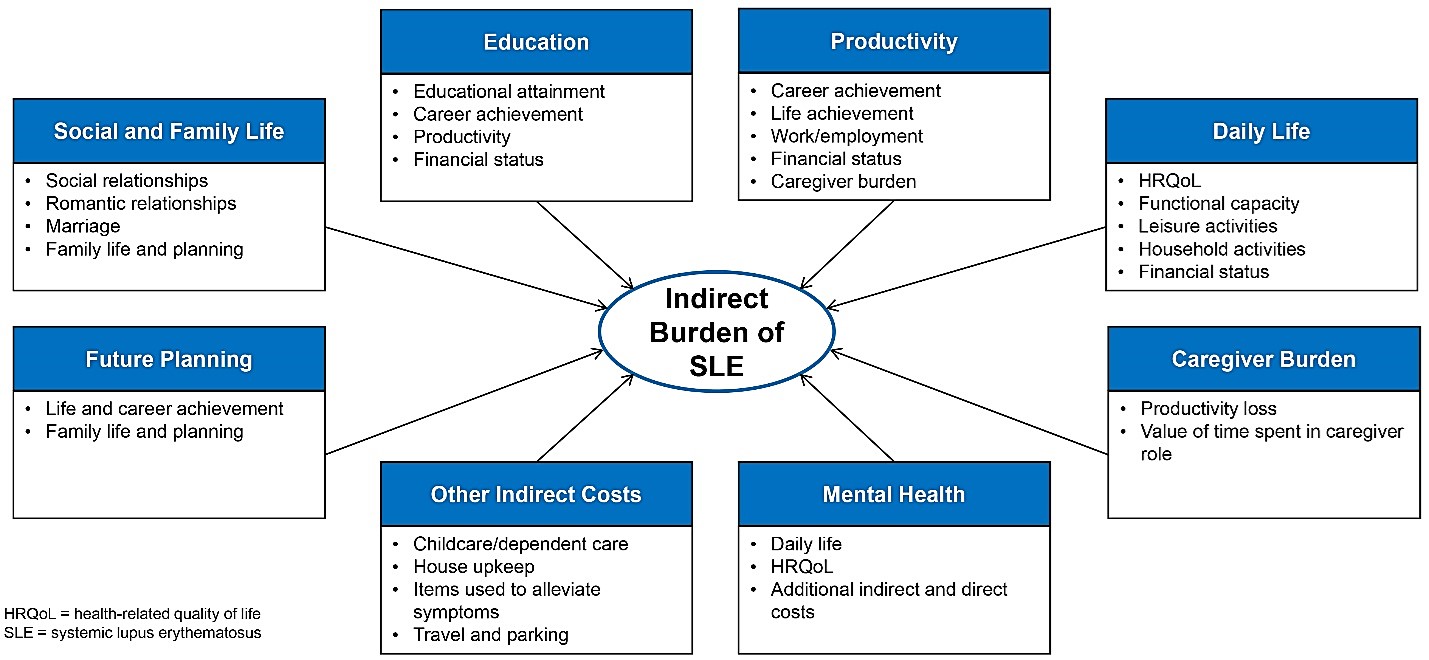Session Information
Session Type: Poster Session A
Session Time: 9:00AM-11:00AM
Background/Purpose: SLE is a chronic autoimmune disorder that affects multiple organs and leads to a variety of symptoms, including joint pain, fatigue, and skin rashes, that significantly impact patients’ lives. Despite the known increased risk of morbidity and mortality in affected populations, there has been limited research about the impact of SLE on a patient’s daily life, such as career achievements, social/leisure activities, and family dynamics. A qualitative study was conducted to examine the impact of SLE on daily life from a patient’s perspective and to develop a conceptual framework for overall impact.
Methods: A literature review was conducted to identify domains of interest to discuss in the interviews. A semi-structured interview guide was developed to gather patients’ perspectives on previously identified areas of SLE impact and identify other ways in which SLE affects daily life. Twenty adult patients with SLE consented to teleconference interviews to discuss how SLE impacted their lives. Transcripts were then analyzed to identify themes. Based on literature review and patient interviews, a preliminary conceptual framework was developed for understanding the indirect burden of SLE on patients.
Results: The literature review identified 10 domains of interest which were used as the topics of the in-depth interviews: career/education, social impact, physical activity, cost (direct/indirect), patient burden, family planning, treatment preference, clinical perspective, family burden, and mental health. Of the patients interviewed, a majority were female (95%), aged 30-39 years (40%), African American/Black (45%), and had employer-based insurance (70%) (Table 1). Over half of the patients reported ≥1 flare in the previous 12 months. Content analysis of interview transcripts revealed 8 domains based on patients’ perceptions of how SLE impacts their daily lives (percentage of patients reporting): physical activity/mobility (20%), reduced flares (15%), ability to work (10%), relationships/social life (45%), mental health (20%), fatigue (15%), inflammation/pain (20%), and direct/indirect healthcare costs (15%) (Table 2). Patients reported that the overall burden of SLE persisted despite treatment and increased with flares. The conceptual framework illustrates domains identified from the literature review and patient interviews (Figure 1). Previously studied domains included productivity, daily life, caregiver burden, and mental health. However, education, family/social lives, future planning, and other indirect costs were newly identified as domains that have not been well characterized.
Conclusion: Based on the literature review and in-depth patient interviews, a conceptual framework was developed for understanding the numerous factors contributing to the impact of SLE on patients’ lives in 8 discrete yet interrelated domains. Data reflecting the patient-centered burden of SLE in the literature are limited, especially with respect to the impact on education, family/social lives, future planning, and indirect costs. Future research should target these evidentiary gaps to better establish a holistic view of patient-centered SLE burden.
To cite this abstract in AMA style:
Strand V, Masurkar P, Reckleff J, Schwartz T, Silverstein A, Osborne J, Lloyd J, Leinwand B, Karis E, Barbar-Smiley F, Costenbader K. A Conceptual Framework to Characterize the Indirect Burden of Systemic Lupus Erythematosus (SLE): Findings from Qualitative Patient Interviews [abstract]. Arthritis Rheumatol. 2023; 75 (suppl 9). https://acrabstracts.org/abstract/a-conceptual-framework-to-characterize-the-indirect-burden-of-systemic-lupus-erythematosus-sle-findings-from-qualitative-patient-interviews/. Accessed .« Back to ACR Convergence 2023
ACR Meeting Abstracts - https://acrabstracts.org/abstract/a-conceptual-framework-to-characterize-the-indirect-burden-of-systemic-lupus-erythematosus-sle-findings-from-qualitative-patient-interviews/



